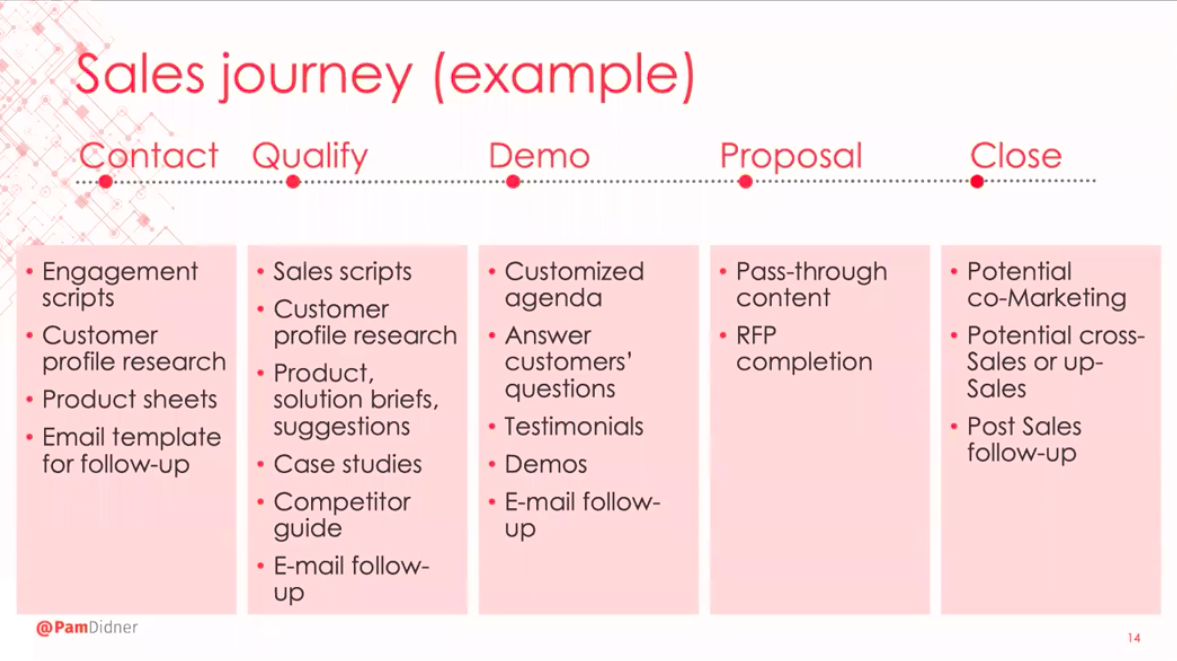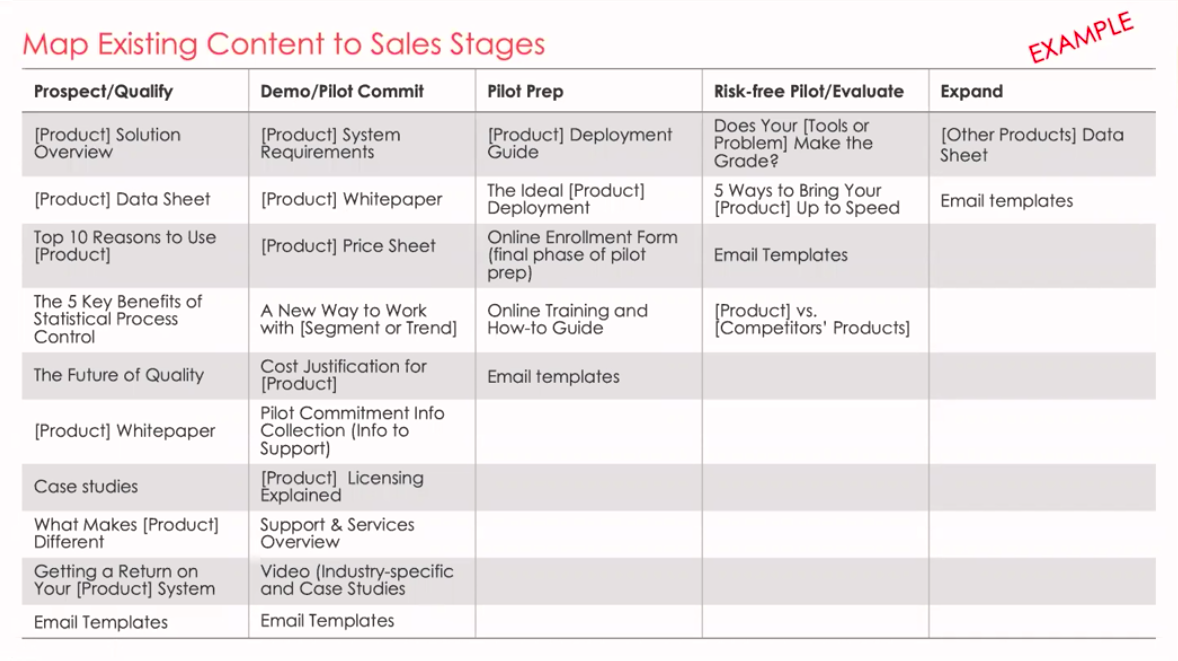Let’s talk about marketing and sales. At times it can seem like marketers are from Mars and salespeople are from Venus.
Marrying marketing and sales is not an easy task. It takes a lot of effort and both teams have to align on the same goals. As frustrating it may be, when marketing and sales can finally see eye to eye, magic happens.
We recently had the pleasure of hosting Pam Didner, marketing expert, speaker, author and consultant, on a webinar to share her wisdom on how to align sales and marketing through content creation. She brought her enthusiasm and energy along with a handful of informative insights.
During the webinar, Pam discussed several ways to:
- Align your content marketing with sales needs in mind.
- Customize content for social selling and employee advocacy.
- Map content easily between sales and marketing.
In case you missed it, here’s the replay. To give you a better glimpse into our conversation, here are three key takeaways from the webinar.
1. Understand What Matters to Sales
There are numerous ways that marketers and salespeople don’t see eye-to-eye.
For example, here are just a few of the differences:
- Top of funnel vs. bottom of the funnel.
- Buyer’s journey vs. Sales targets.
- End-users vs. Decision-makers.
- Consumers vs. Dealers and Distributors.
- Buyer Personas vs. Accounts.
As a marketer, you likely think that you have to create social media content to build brand awareness for your target audience. But your salespeople aren’t. They’re thinking about what content they need to specifically engage a prospect or a committee of buyers from one company. These are two different approaches but neither is wrong.
To better understand your sales counterparts, you need to think like a salesperson, as Pam suggested.
Pam recommended the use of buyer personas and customer journeys to bridge the gap between sales and marketing. Buyer personas and customer journeys are both critical parts of any marketing strategy. They help you understand your ideal customers better and what characteristics to look for.

In the same light, Pam recommends that marketers create “sales personas” and “sales journeys” to help think about supporting sales in their selling journey. Her recommendation is to think about the phrase, “I need [marketing] help to [do what], [what] and [what]?”
Lastly, Pam recommends that all marketers make an effort to understand their company’s sales process. This involves understanding the various sales stages and what is involved in each stage. For example, what questions do sales ask? What content does sales use? What objections do they encounter often? And what does sales do to move their prospects forward to the next stage?
With these questions in mind, you can now fill the missing gaps in the sales process and help your sales counterparts.
2. Structure Information In a Way Sales Can Understand
Once you’ve created the stages of your sales process, the next step is to create content that can answer each stage’s objections or questions. You also want to structure information in a way your sales team can comprehend.
For example, Pam recommends taking your existing content and mapping it to each sales stage. By doing this, you’re giving your sales team guidance on what content is available and when salespeople can use it with prospects. Remember that creating new content is time-consuming, so audit your existing content library to see what can be readily used.

If you’re marketing for a company that offers multiple products to multiple personas or industries, then you can recreate this approach for all scenarios. You can map max existing content to sales stages for reach a specific product, persona and industry. If your sales team is segmented by geography then you can also do a separate map for them as well.
Organizing information seems like a lot of work and Pam agrees. If you’re in a crunch for time then Pam recommends creating a simple cheat sheet with the content you already have. It can be existing blog posts, data sheets, or product reviews. Simply organize it into one digestible cheat sheet for your sales team to use. It’s a quick win and your sales team will thank you for it.
3. Make Your Sales Team Look Fabulous On Social Media
From Pam’s perspective, the easiest way to stay top of mind with prospects is to:
- Share content from your employee advocacy platform.
- Comment, share or like relevant third-party content.
- Share seemingly irrelevant content with a personal touch.
It’s completely okay to have your sales team share articles that aren’t solely about your business. Pam highly recommends sharing humorous articles or lighthearted topics. Social media is about people connecting with people so it’s essential to highlight content that gives your salespeople a personal touch.
Content curation is a frustrating job. The core of how effective your content is and how your business is perceived is through writing. When you’re helping your sales team with copy for social media posts, you should provide options for how they want to position themselves.
Pam provided a few examples of copywriting to position your sales reps as thought leaders, trusted advisors and salespeople.
Sales and Marketing Is All About Respect
We know that getting marketing and sales to work together is a lot of work. With over ten years of experience supporting a sales team, Pam understands just how much effort is involved in aligning internal stakeholders. Her advice is that you stay on the right path that you’re on.
By taking leadership to understand what matters to sales is the crucial first step. Once you know how your sales counterparts work, you’ll recognize where the gaps are that you can fill.
Sales and marketing both share the same goals, so why not get along?





